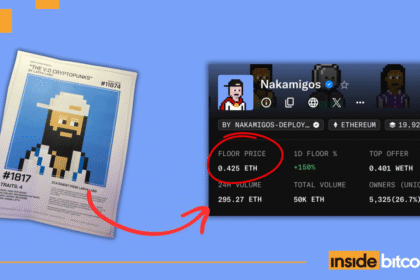So far this week, we’ve covered the different types of crypto trading and where that trading actually happens.
Cool, cool. But once you get your hands on some crypto… then what?
Today’s edition is here to answer that question by walking you through the different types of crypto wallets – aka where your crypto lives once you buy it.
Yesterday, we introduced the idea of custodial wallets (when someone else, like a crypto exchange, holds your keys) vs non-custodial wallets (when you hold your keys).
But there’s another way to divide crypto wallets: they can be hot and cold.
Ready to dig in? Lessgo 👇
|
🔥 Hot wallets
These are wallets that are connected to the internet in some way. This connection makes them quick, easy, and convenient for regular use.
Some examples of hot wallets include:
1/ Online wallets
For example: MetaMask.
Online wallets are web-based and can be accessed through your browser.
They’re super convenient – no downloads, just a login. This makes them especially beginner-friendly, since setup usually just involves creating a username and password.
✅ Good for people who want quick access to their crypto from anywhere, on any device.
❌ However, because they’re always online, they’re more vulnerable to phishing attacks, browser hijacking, and platform hacks.
2/ Mobile wallets
For example: Zengo.
Mobile wallets are apps installed on your phone, great for fast, on-the-go transactions.
You can use them to scan QR codes, pay in crypto at supported stores, trade tokens, or interact with DeFi – all from your phone.
Many mobile wallets, like Trust Wallet or MetaMask, also support multiple chains and come with user-friendly interfaces.
✅ Great for fast, on-the-go transactions.
❌ But keep in mind: they rely on your phone’s security. If it gets hacked, lost, or stolen, your wallet could be compromised – especially if you haven’t backed up your recovery phrase or set up biometric authentication.
|
3/ Desktop wallets
For example: Electrum.
These are software programs you download onto your computer.
They give you more advanced tools, like full-node access, detailed settings, or privacy features.
Plus, when installed on a secure computer, they can offer better protection than web or mobile wallets, especially if you keep them offline (which technically turns them into a cold wallet).
✅ So, it’s typically used by people who want more control and features.
❌ Downsides: they’re less portable, and if your PC gets infected with malware or crashes without a backup, you could lose access to your funds.
|
And now, moving on to…
❄️ Cold wallets
These are wallets that live offline.
That’s what makes them ultra-secure – they’re immune to things like online hacks or phishing.
Cold wallets are not ideal for buying coffee, but they’re definitely the go-to choice for anyone planning to hold their crypto long-term.
|
Some examples of cold wallets include:
1/ Hardware wallets
For example: Ledger Flex.
These are small physical devices that store your private key.
Here’s what using one looks like:
-
You plug the device into your computer or phone;
-
You open a companion app (like Ledger Live) to tell it: “Hey, I want to send some Bitcoin”;
-
The hardware wallet checks the request and asks you to confirm it;
-
Once confirmed, the wallet signs the transaction inside the device – your private key never touches the internet.
So, even if your laptop is full of viruses, hackers can’t steal your crypto, because the private key stays locked inside the hardware wallet.
✅ Great for: storing large amounts of crypto safely, especially long-term.
❌ Downsides: costs money, takes a few minutes to set up.
2/ Paper wallets
For example: uhh… A4 paper?
This is the most low-tech option: you just write your public address and private key on a piece of paper.
… And that’s it.
It costs nothing, and it’s fully offline. But here’s the catch:
To use the crypto on a paper wallet, you have to type your private key into a wallet app or website – and the second you do that, it’s not so safe anymore.
Also: it’s paper. Spill your drink on it, or lose it, and your crypto is gone.
✅ Good for: deep cold storage of small amounts.
❌ Downsides: super easy to lose, damage, or leak by accident.
|
So, are you hot or cold?
-
Hot wallets are great for quick trades, daily use, and small amounts of crypto – but they’re more vulnerable since they’re always online.
-
Cold wallets are better for long-term storage and larger amounts. They stay offline, which makes them much safer from hacks – but they’re not very convenient for daily use.
Actually, most people end up using both: a hot wallet for daily stuff, and a cold wallet for long-term hodling.
Whichever you choose, we hope today’s guide helped you understand where your crypto actually lives – and how to keep it safe 🔒
|
Now you’re in the know. But think about your friends – they probably have no idea. I wonder who could fix that… 😃🫵 Spread the word and be the hero you know you are! |















